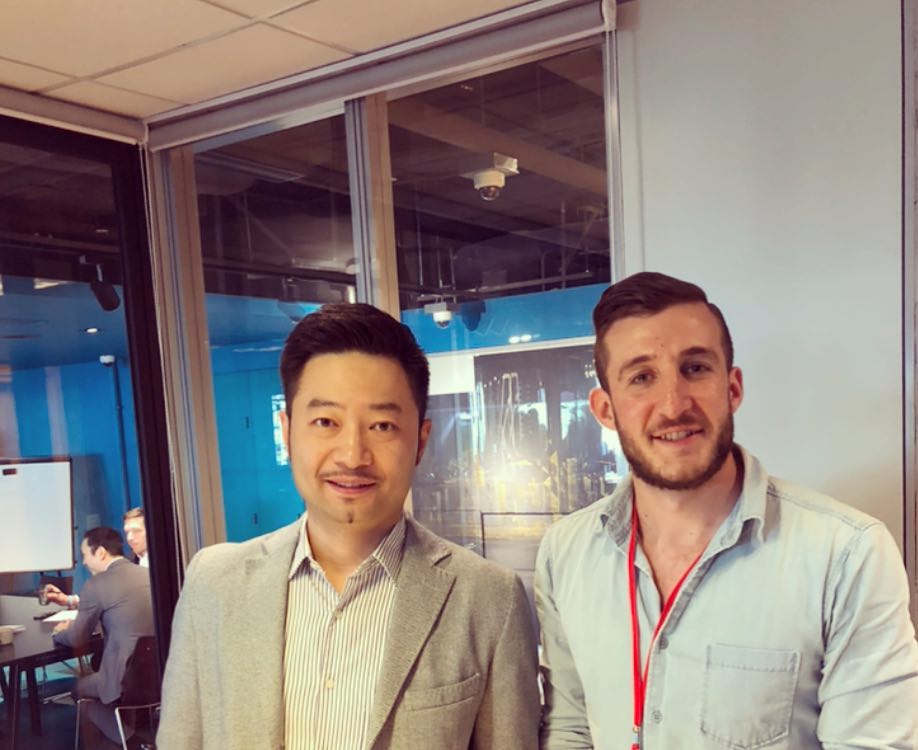In the crypto world, Neo and its founder, Da Hongfei, need no introduction. Currently the world’s ninth largest cryptocurrency by market cap, Neo is a blockchain project that aims to create a “smart economy” with a distributed network.
The platform’s smart economy incorporates digitized physical assets, digital identity, and proof-of-ownership in their blockchain, with all of these assets having the ability to be traded and leveraged through smart contracts. I recently spoke with Hongfei to learn more about his strategy to build a decentralized blockchain platform in China.
How did the project start?
Hongfei, a self-taught computer programmer, first came across bitcoin in 2011 and immediately became fascinated by the blockchain world. At that time, there was no bitcoin community in China, so Hongfei pioneered the movement until eventually focusing on building his own platform in 2014. He conceived China’s first open-source blockchain project, with an aim to build a compliant ecosystem with a safe and legally binding framework.
The original name of the project was Antshares, derived from the Chinese name which translated to “TinyAnt.” However, Hongfei thought a rebrand was needed when they faced issues securing the domain and conflicts arose with other brands in China, like Ant Financial. In August 2017, Neo was born.

Da Hongfei and the author at Hong Kong’s Token 2049 conference.
Two token sales
Hongfei studied the market for years before launching Antshares, which first ICO’d back in October 2015. It raised US$700,000 at a time where ICOs were a relatively new phenomenon. A year later, they held a second ICO, which raised just over US$3.8 million, with each token selling for US$0.3.
Neo’s market cap has now risen to over US$3 billion, with the token currently priced (at the time of writing) at US$52.
While the platform has enjoyed such growth in the short term, spending time with Hongfei has made me realize that he is a disciplined man with a vision for the long term.
Is it the Ethereum of China?
This comparison is regularly made, but is it accurate?
Hongfei responds, “We started around the same time, but a big difference between Ethereum and Neo is the underlying design philosophy.” According to him, while Ethereum is trying to be a platform for decentralized apps, Neo believes that “blockchain itself and those decentralized apps need to be hybrid.”
“We’re not trying to replace the old system; we’re trying to integrate with the old system. We’re thinking we should build more hybrid solutions, not just those that are decentralized.”
Another differentiating factor is the speed of both networks. Neo can process up to 10,000 transactions per second compared to Ethereum’s 30.
Is Neo too centralized?
This criticism has often been raised about the platform’s governance structure. In the crypto world, there are tradeoffs. For example, bitcoin is more decentralized but always faces criticisms for slow and expensive transactions and a lack of dispute mitigation mechanisms.
Hongfei realizes that such tradeoffs are necessary during expansion and doesn’t plan for Neo to be centralized forever. While he says he believes in the power of decentralization like everyone else, he has a different approach to get there.
“China is very supportive of blockchain technology but not of speculation, which is inherent in ICOs. The pure idealist would probably go straight ahead, but we saw barriers that we needed to deal with first,” explains Hongfei.
 !
!
Da Hongfei talking to the NEO development community in Australia.
Entities moving into blockchain
Traditional investors and large corporations are starting to move into blockchain. It might not be clearly visible to the average retail investor looking in from the sidelines, but those in the crypto world can clearly see a shift happening behind the scenes.
Hongfei predicts:
“The mainstream financial investors and large corporations are all starting to move into the industry. But they will all need professional services that are compliance-ready, such as licensed exchanges and secure custodian services.”
What does the future look like?
When discussing predictions for the industry in 2018, decentralized exchanges (DEX) and stablecoins are the innovations Hongfei is most excited about. Neo is even building its own decentralized exchange platform called NEX.
The first era of the DEX required all transactions to take place on-chain, which made for incredibly slow processing and a poor user experience. The acknowledgement of these limitations has led to a new concept of a “super inductive exchange,” which was explained in Neo’s first whitepaper. In this new model, only the settlement is done on-chain and everything else is done off-chain, improving speed and user experience.
It’s been an incredible journey from Hongfei’s initial concept in 2014, and it looks like it’s going to be an exciting year for the platform.
Hi! I am a robot. I just upvoted you! I found similar content that readers might be interested in:
https://www.techinasia.com/talk/neo-approach-decentralization
Downvoting a post can decrease pending rewards and make it less visible. Common reasons:
Submit
Congratulations @sam.ameen! You received a personal award!
Click here to view your Board of Honor
Downvoting a post can decrease pending rewards and make it less visible. Common reasons:
Submit
Congratulations @sam.ameen! You received a personal award!
You can view your badges on your Steem Board and compare to others on the Steem Ranking
Vote for @Steemitboard as a witness to get one more award and increased upvotes!
Downvoting a post can decrease pending rewards and make it less visible. Common reasons:
Submit